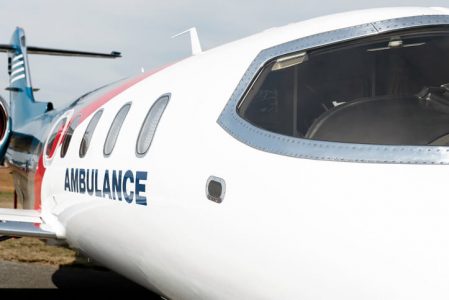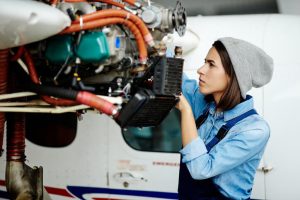Above the Clouds, Beyond Expectations: Air Ambulance Safety
We all know air ambulance services are incredibly important, which means safety should be the top priority in these operations. From aircrew to medical personnel to patients, safety must be taken into consideration before any air ambulance flights. To ensure that everyone is safe while on board, it’s critical to understand and follow the proper safety protocols.
Air Ambulance Safety Protocols
Air ambulance safety is essential for safe and successful air operations. From the moment these helicopters or airplanes take off to when they land, aircrews strictly adhere to air traffic regulations and procedures set forth by aviation authorities such as the Federal Aviation Administration (FAA). Below is a list of some safety protocols to help keep your flight safe. Note that your company will have its own SOPs regarding air ambulance operations.
Check aircraft systems and equipment prior to takeoff:
Pilots should conduct thorough pre-flight checks on the arrival of an aircraft at the medical facility to ensure everything is in good working condition.
Be aware of weather conditions:
Weather conditions can change quickly when flying at different altitudes or locations, so pilots should monitor forecasts and be prepared to adjust their flight plans accordingly.
Ensure passenger comfort:
Pilots must ensure that passengers are comfortable during the flight by providing seating, blankets, and other amenities as needed. They should also be aware of any medical needs the passengers may have while in flight.
Maintain communication with ground personnel:
Pilots should always maintain communication with ground personnel to ensure they are aware of any changes or hazards along their route of travel.
Prepare for emergencies:
Pilots should be prepared for potential emergencies by familiarizing themselves with onboard safety equipment and procedures as well as alternative routes or destinations in case of adverse weather conditions.
Aircrew Training
Aircrew members play a crucial role in air ambulance operations, and they must be thoroughly trained on helicopter operations to ensure their safety and that of the other passengers.
Training may include:
- Aircrew familiarization,
- Air medical operations training,
- Air ambulance security protocols, and
- Air traffic control procedures.
Additionally, aircrews must receive special training in search-and-rescue operations and be prepared to handle any flight emergency situation that may arise.
Aircraft Maintenance
Not only do pilots and crew want to keep up to date on training, but companies and crews will want to keep the aircraft in top condition as well. This includes regular checks on the airframes, engines, and other components of the aircraft. In addition to routine maintenance checks, air ambulance operators also have their aircraft go through a thorough pre-flight evaluation before each air mission. During this process, crew members will check the airworthiness of the aircraft as well as any navigation and communication systems that are installed. By ensuring that these components are all functioning properly prior to flight, air ambulance operators can increase safety for everyone involved in air operations.
Medical Safety Considerations
Medical personnel must also be aware of safety protocols and have a thorough understanding of proper air ambulance procedures. Additionally, aircrew members should be trained on how to handle medical emergencies that may arise during flight. Also important is that all passengers always wear their seat belts and follow the instructions given by aircrew members for their own safety.
Conclusion
With air ambulance safety at the forefront of operations, aircrews can focus on providing top-notch medical care to their patients and ensure that air ambulance services are available whenever they are needed. By following air ambulance safety protocols, air ambulance operators can ensure the safety of everyone involved in air operations and continue providing top-notch medical care to their patients. With proper air ambulance safety protocols in place, we can make sure that air ambulance services are available whenever they are needed.
CTS has you covered when it comes to air medical training crewmember training. We over a medical package with 30 hours of training, including multiple CAPCE certified courses. For more information on this package and others, visit ctsys.com or email our team at train@ctsys-staging.azurewebsites.net










